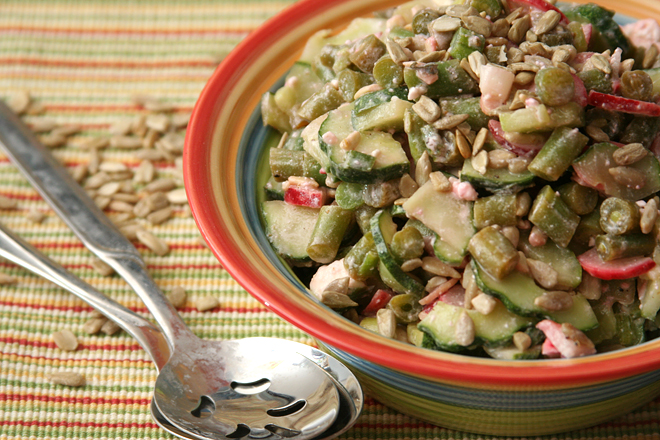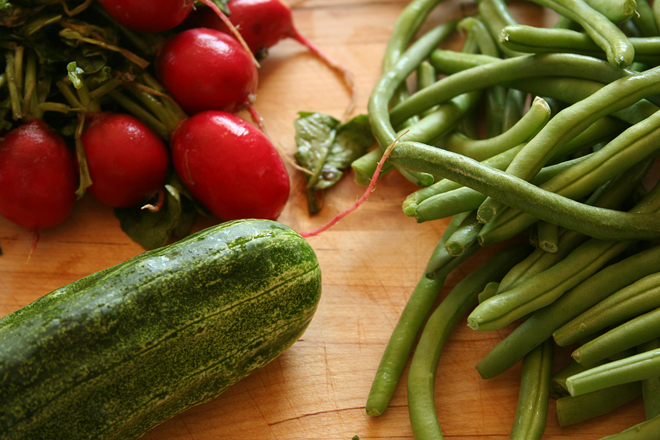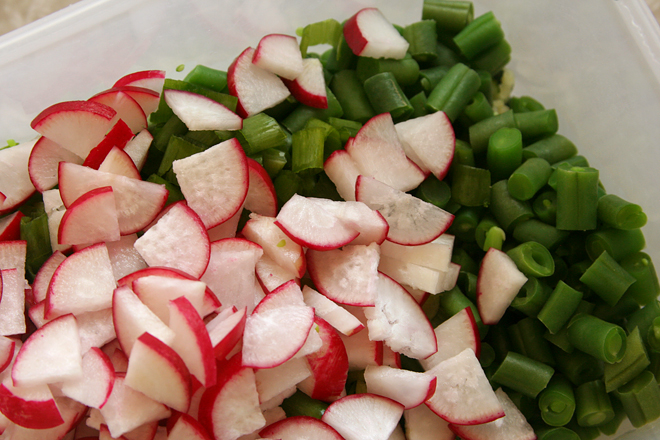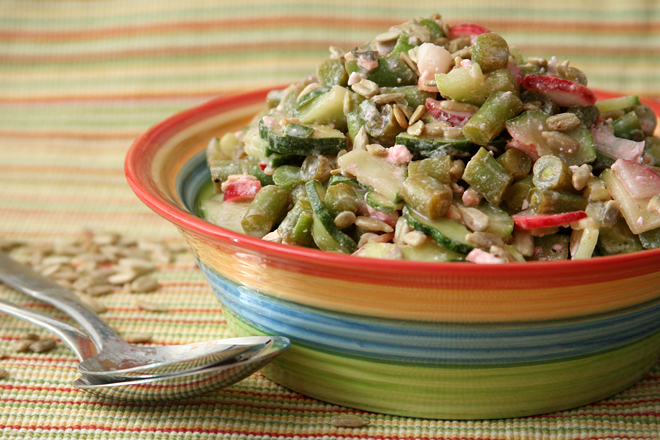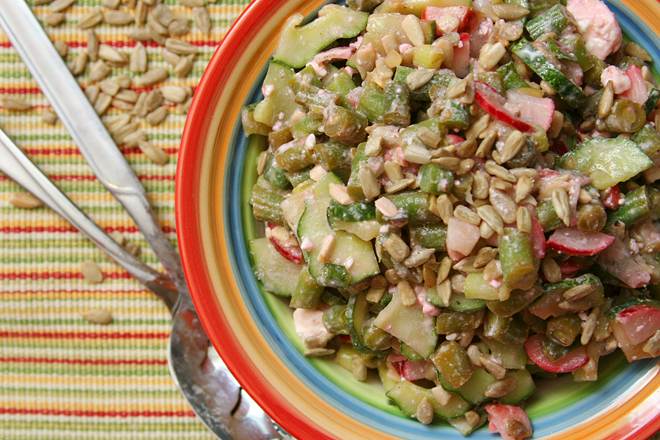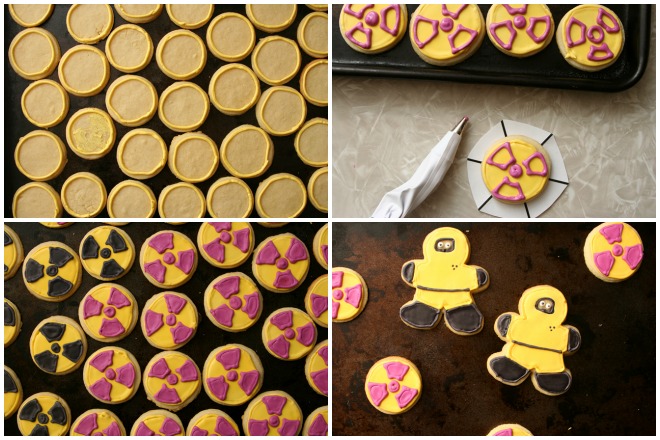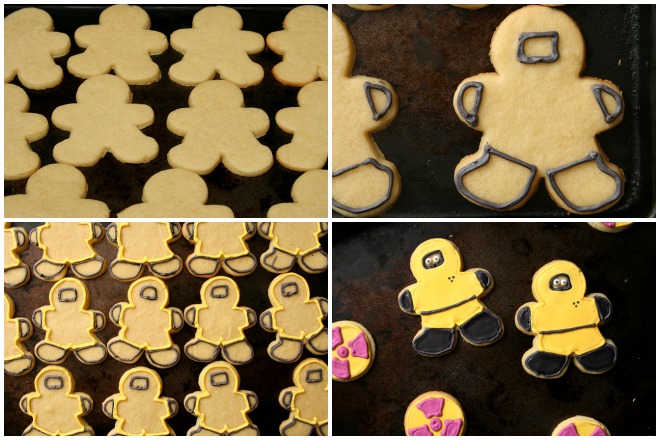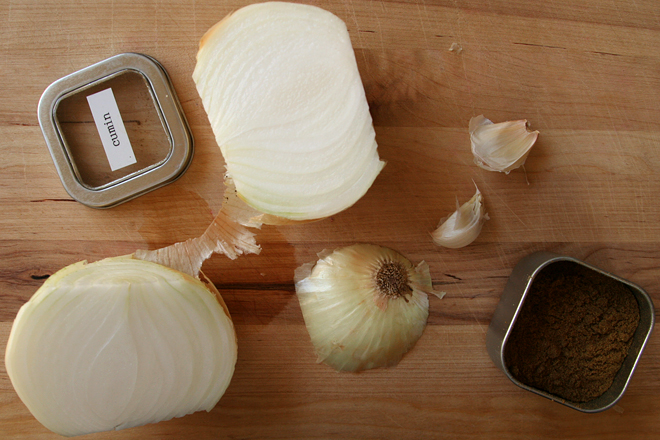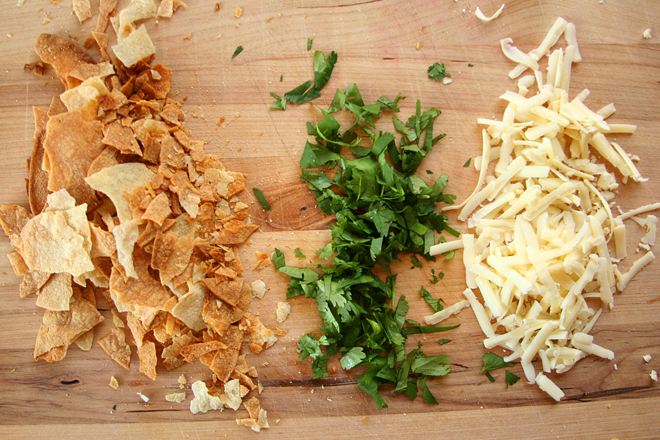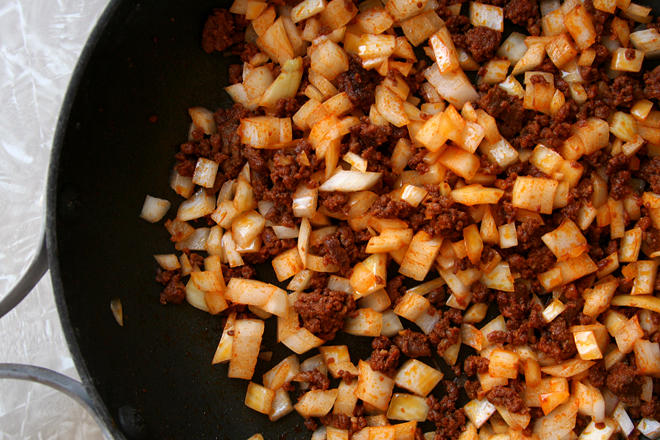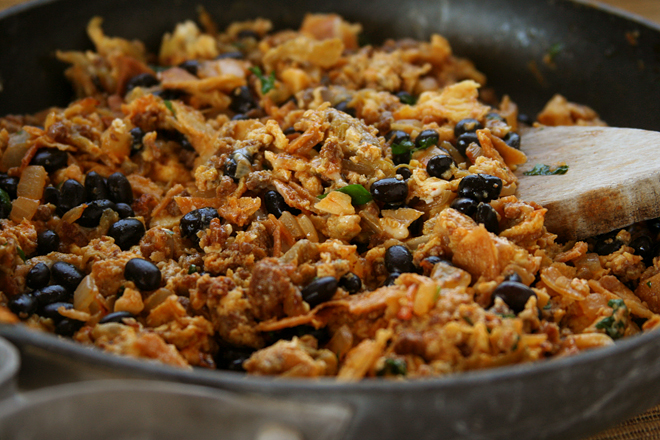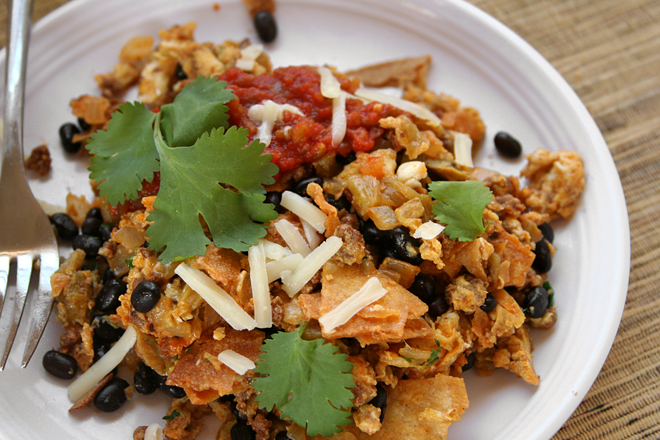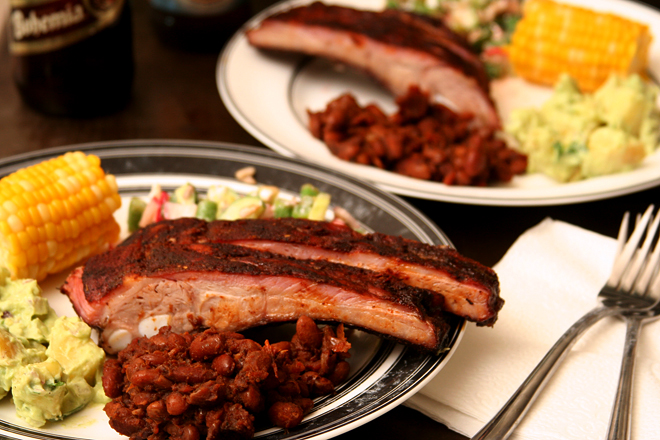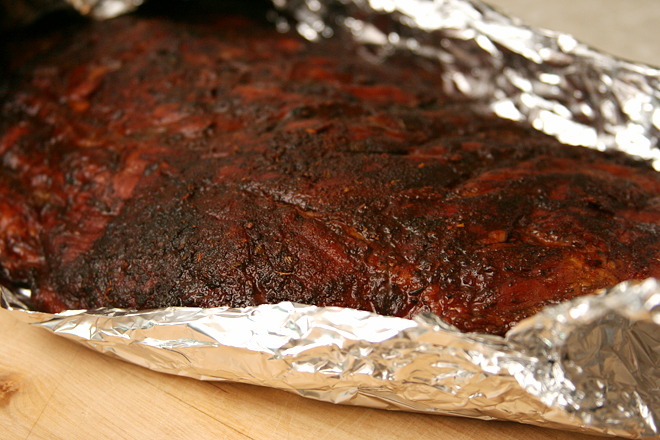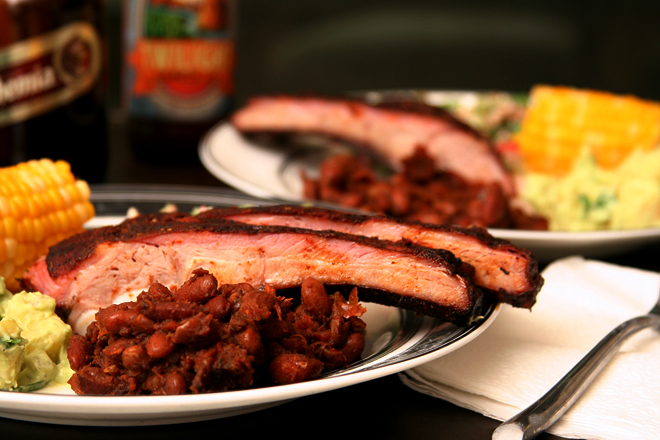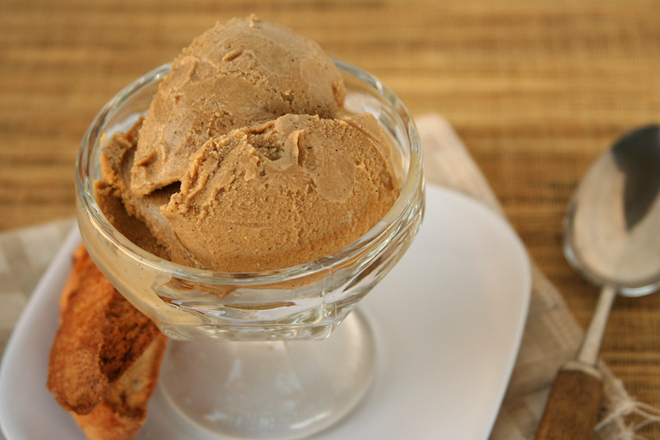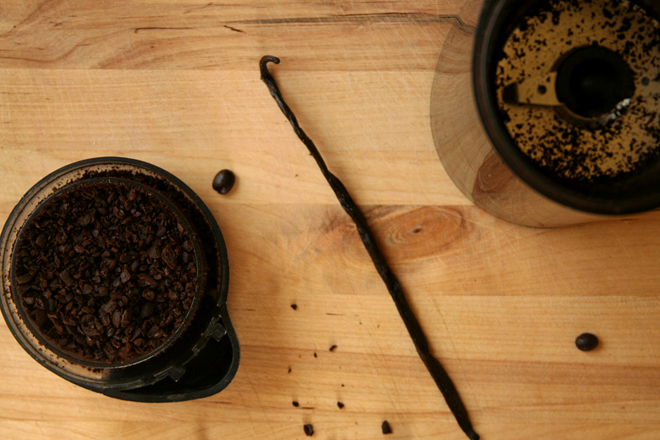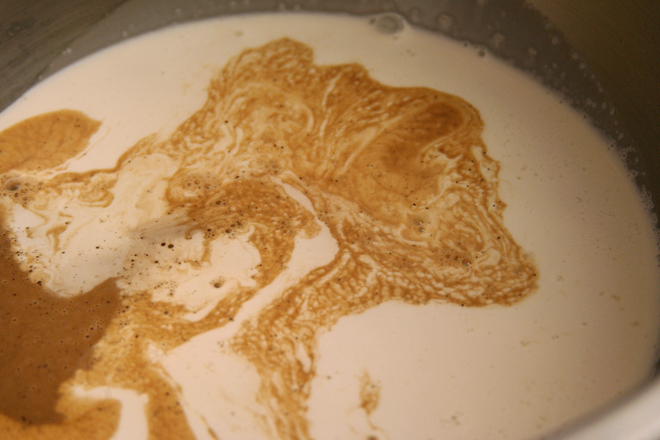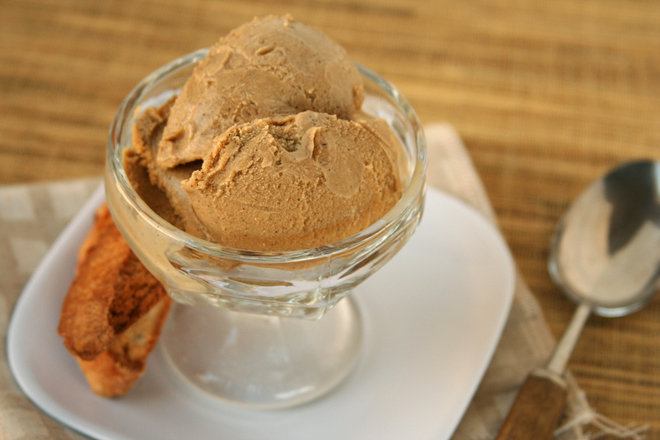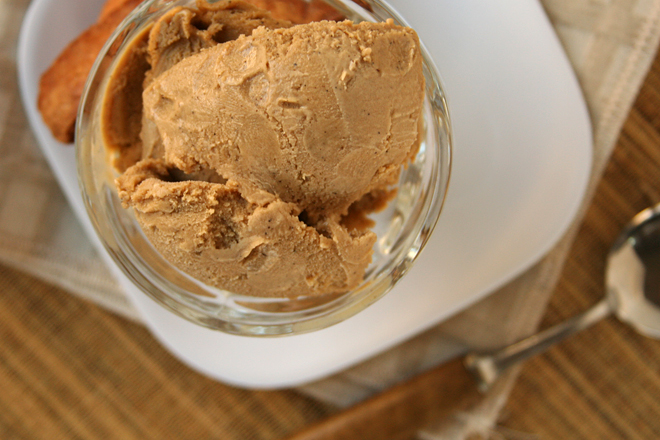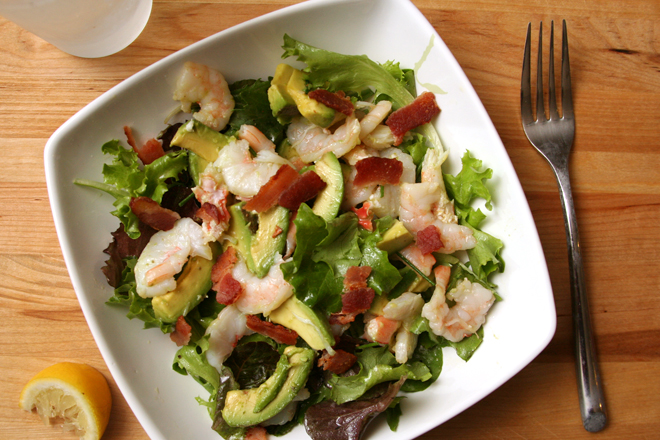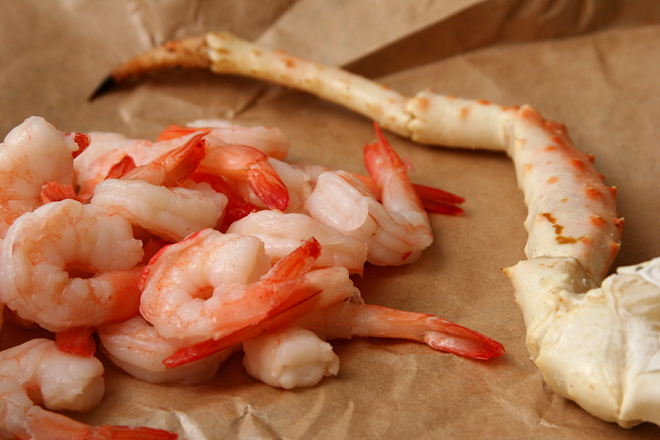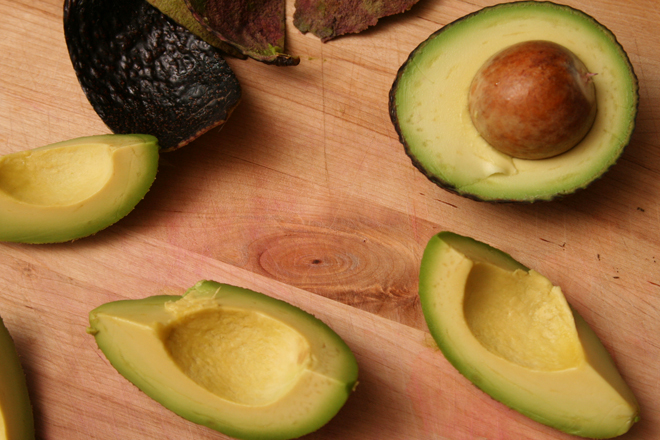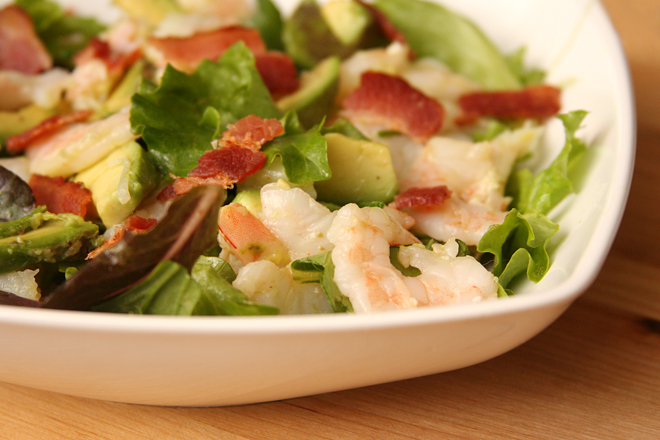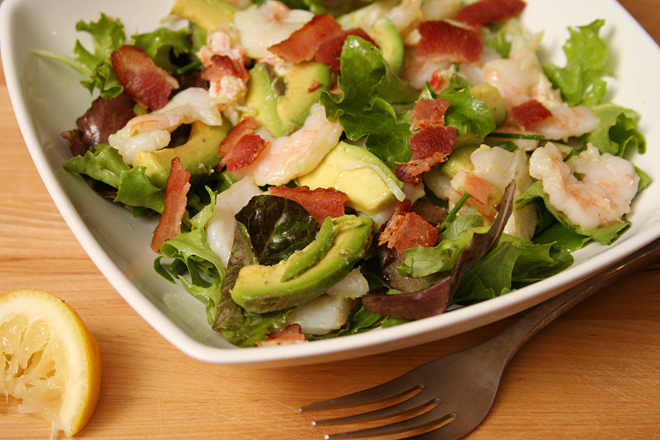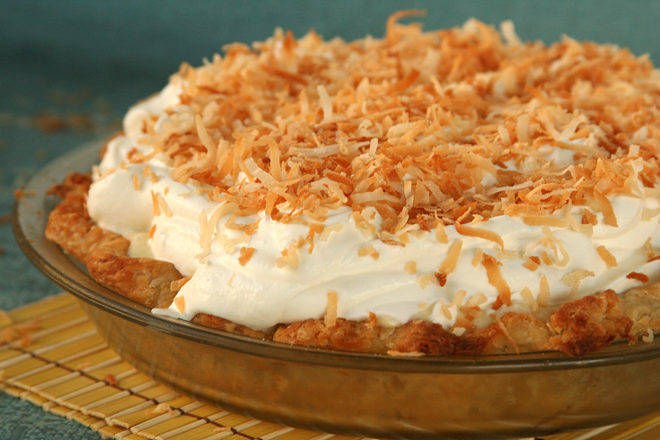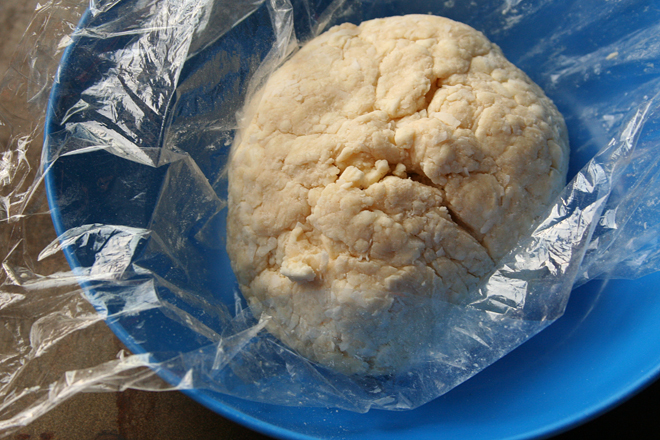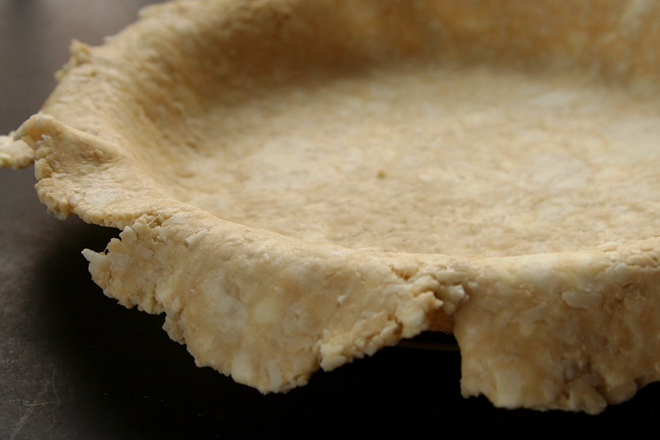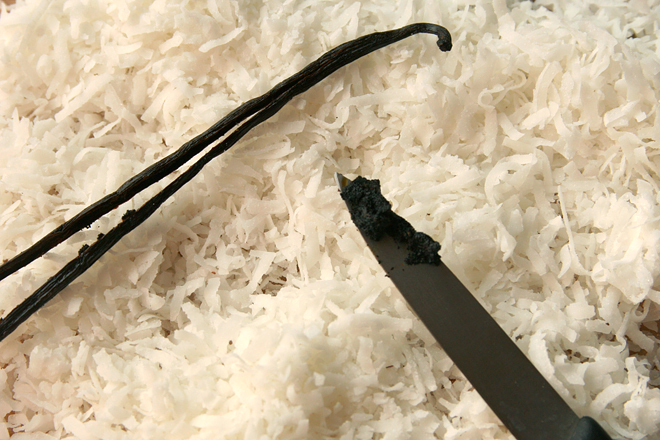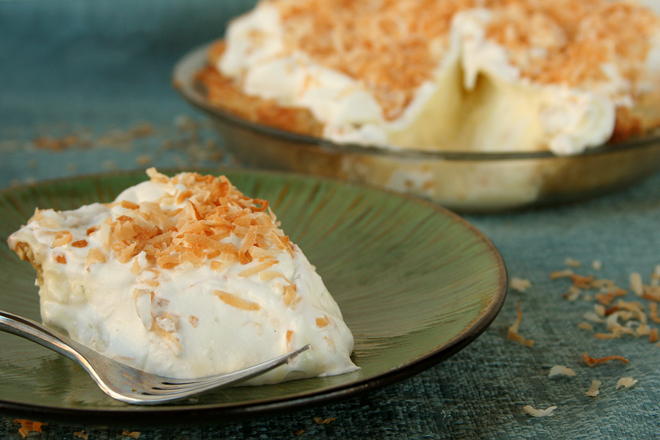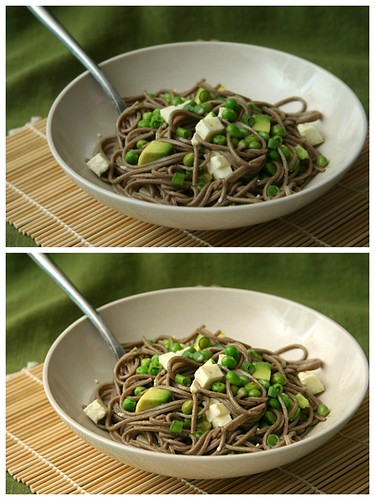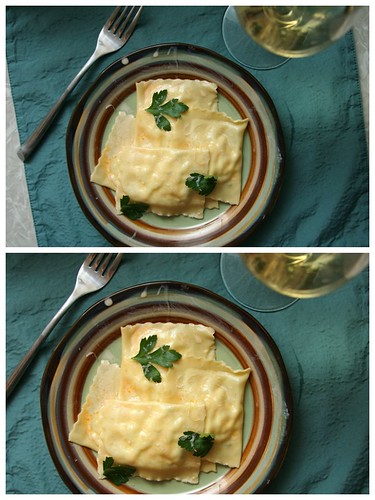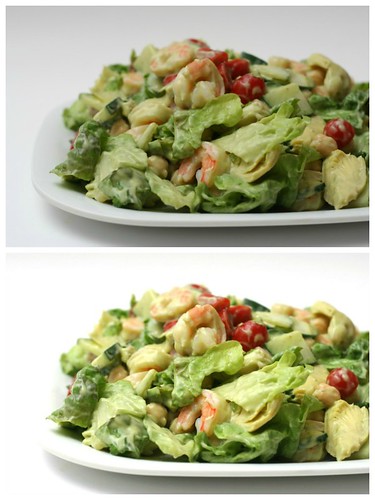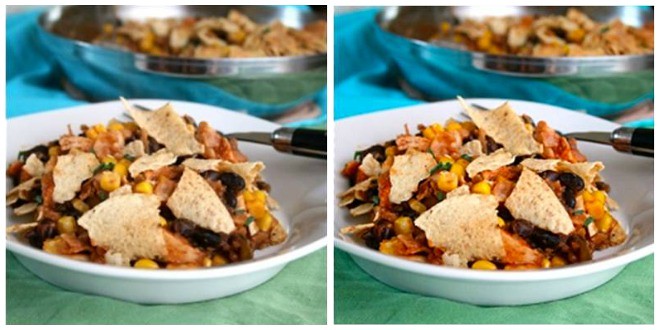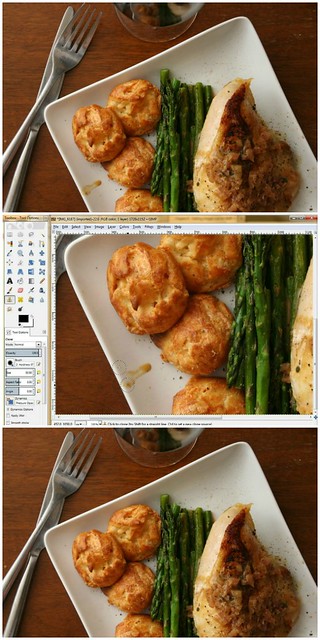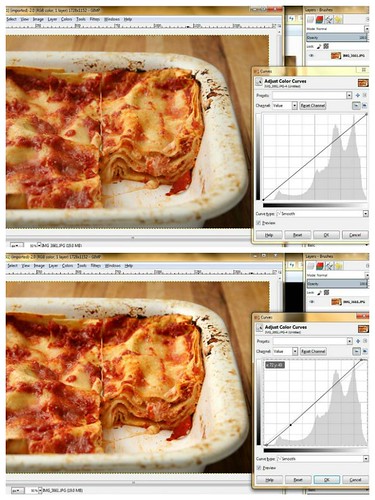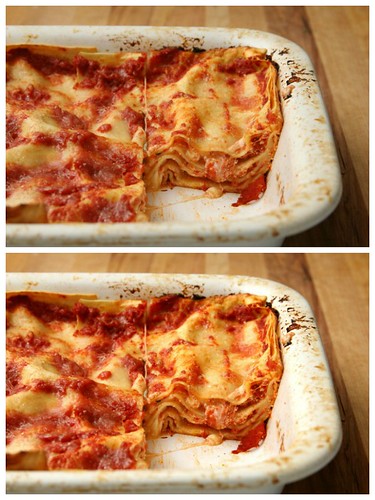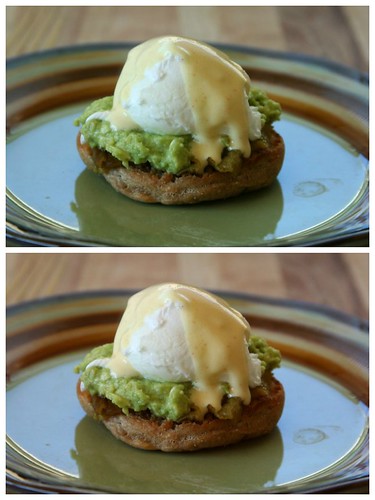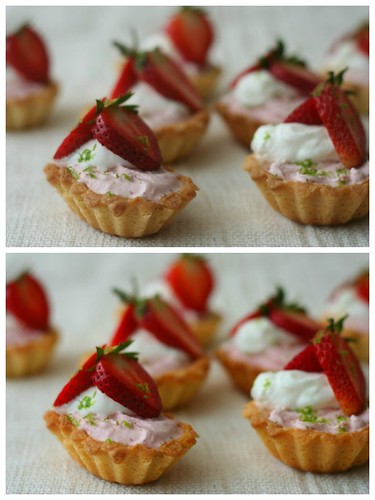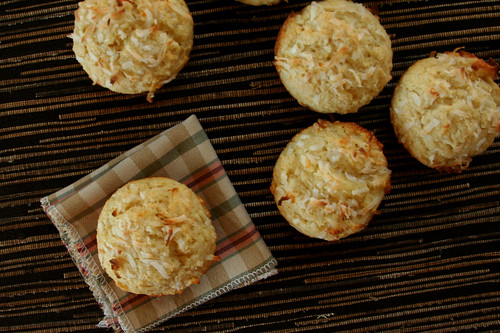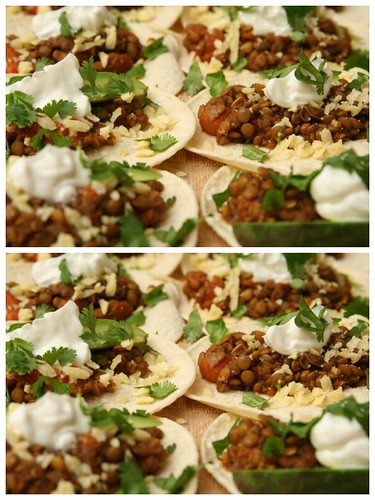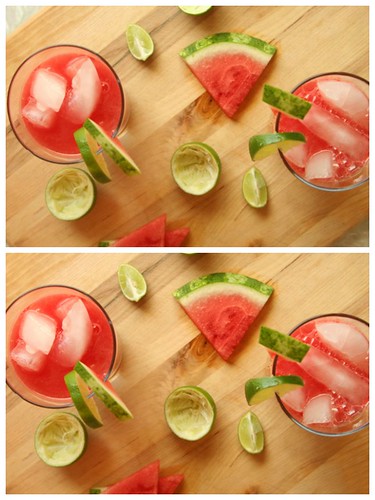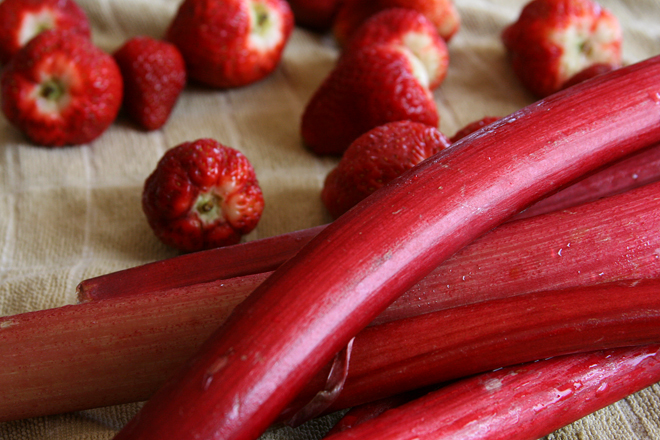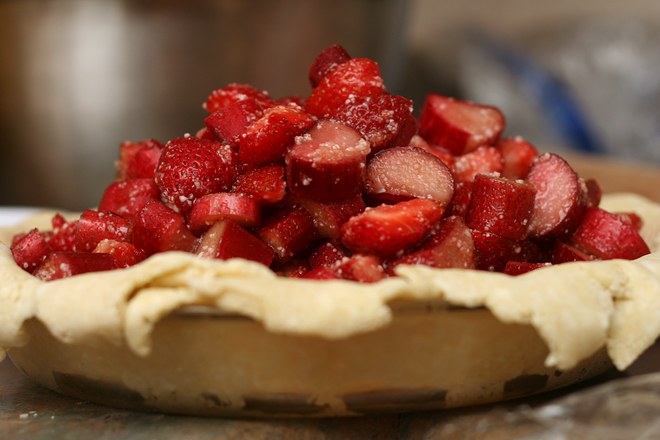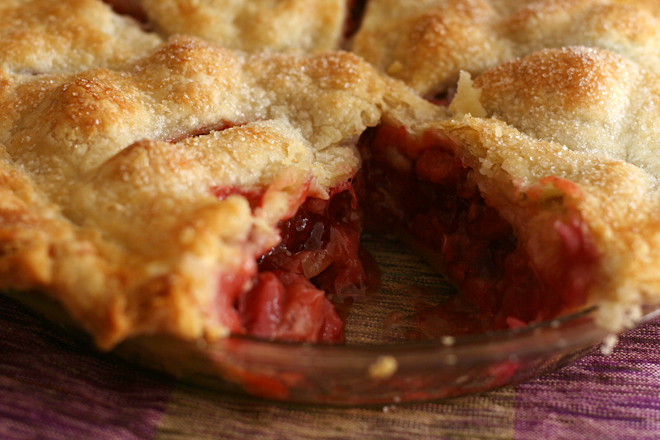I know white chocolate isn’t as sexy as its darker sibling, but I think it has its own charm. It’s not much beyond sweet and soft, which could be boring, but you can use those traits to the advantage of the treat you’re making with it. Mixed into a batter, it adds a little more interest than plain white sugar would, although I think you’d be hard-pressed to pick out the white chocolate flavor if you didn’t know it was there.
That being said, while I expected these to turn out quite nice, they exceeded my expectations. I reduced the sugar from the original recipe, suspecting that the white chocolate would contribute plenty of sweetness, and that, combined with an extra dose of salt, resulted in the perfect balance. Bright, juicy strawberries added a welcome flavor and texture contrast. Forced to choose between these and my favorite dark chocolate brownies would be a tough call, but these tamer white chocolate brownies would stand a good chance.
One year ago: Pizza Bianca with Goat Cheese and Greens
Two years ago: Garlic Mustard Glazed Skewers
Three years ago: Tribute to Katharine Hepburn Brownies
Four years ago: Vanilla Ice Cream
Printer Friendly Recipe
Strawberry White Chocolate Brownies (adapted from Love and Olive Oil)
Makes 16 squares
1 cup (4.8 ounces) all-purpose flour
¼ teaspoon baking powder
⅓ teaspoon salt
5 ounces white chocolate, chopped fine
5 tablespoons butter, cut into ½-inch cubes
½ cup (3.5 ounces) sugar
1 teaspoon vanilla
2 eggs
4 ounces strawberries, hulled and quartered
1. Adjust a rack to the middle position and heat the oven to 350 degrees. Line the bottom and sides of an 8×8 baking pan with parchment paper, leaving a slight overhang. In a medium bowl, whisk the flour, baking powder, and salt together.
2. Set a heatproof bowl over a saucepan containing one inch of simmering water. Add the chocolate and butter; stir frequently until the mixture is melted and smooth, then remove from the heat. Whisk in the sugar (the mixture will appear curdled), then add vanilla and the eggs one at a time, whisking constantly.
3. Switch to a rubber spatula and add the flour mixture, stirring until just combined. Gently fold in the strawberries. Pour the batter into the prepared pan, spreading it into an even layer.
4. Bake the brownies for 25 to 30 minutes, or until the top is lightly golden and a toothpick inserted near the center comes out clean. Transfer the pan to a wire rack; cool completely. Use the parchment paper to lift the bars out of the pan and cut into 2-inch squares. (The brownies can be stored in an airtight container in the refrigerator for up to 3 days.)




